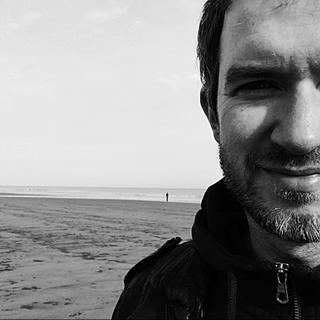Man O'War Character Sketch #2: Nita Rhodes
- Dan Jones
- Jan 26, 2018
- 4 min read
Over the coming weeks in the run up to the launch of Man O’War, I’ll be posting a few lines on each of the main characters in the book, about who they are, what they do and their role in the book. They’re a varied and diverse bunch, in more ways than one, and I have a soft spot for them all. I’ll also be posting a little bit about the creation and inception of each character, and why they are the way they are. I won’t be posting anything spoilerific; these will be more like musings of the author.
The six POV characters are, in order of appearance: the jellyfisherman Dhiraj Om; the corporate Head of R&D Nita Rhodes; brutal gangster Agarkka D'Souza; black market engineer Salazar Gomez;oil heir and civil servant Adem Johnson; and hard-nosed policewoman Tilda Boulton. This week it's Nita Rhodes.
Nita Rhodes
Nita Rhodes is the Head of R&D Programmes for the fictional engineering firm EI Systems (Emotional Intelligence Systems). She and the brains trust of engineers and scientist under her direction at EIS have developed a truly remarkable new technology: the ability for robotic systems to learn, develop and apply human emotions. She is, understandably, highly enthusiastic about this tech, and when we meet her, she is eagerly seeking approval from central government to provide her with a regulatory framework against which to test in a large demonstrator programme.
Hmm. Regulatory frameworks… demonstrator programmes… All that corporate speak doesn’t sound like it makes for a riveting plot, does it? Maybe, maybe not. But having such rigid frameworks in which to operate (which reminds me of the old cartoon where a boss says to his subordinate, "Give me some innovative thinking, and make sure you follow these rules!") can be frustrating, and perhaps can make people as though thwy're forced into "alternative" methods of operation.
Nita was one of the characters I had very little problem in fleshing out, because I meet Nita Rhodes almost every day in my line of work. I’ve dealt with a raft of brilliant companies, of all sizes, all seeking to grab some funding to develop their technology and get it to market. She’s an amalgamation of several people I’ve met over the years, brimming with enthusiasm, ideas and with what looks like a fantastic prototypical product-in-waiting.
Alas, getting something to market in what we refer to as the High Value Manufacturing sectors (not phones and tablets and stuff, but things like aeroplanes, helicopters, large robotic platforms, satellites, etc) is not easy, and the road is particularly difficult for emerging technologies, which moves quickly and is sometimes not well understood by people such as the Sir Ingham Fitzwilliams of this world, the Government regulator whom Nita meets in her first scene. Luckily for me I’ve never sat in Sir Ingham’s chair, but I’ve sat in enough rooms and conference halls with Sir Inghams and Nitas to know how it goes. And sometimes, business can be a bastard.
Behind the push of every great idea is not simply money, or innovation, or ingenuity, but will. In a vast sea of competitiveness throbbing with genuinely brilliant ideas, which ones rise to the surface? The best ones? Maybe. You’d like to think so, at least. But – and this isn’t limited to the technology and engineering sectors – it’s often the ideas with sufficient will, influence and persuasion behind them that make it. That sounds like quite a right-wing appraisal, but given that Nita is a hard-nosed businesswoman, I think it’s also an appropriate one in this instance. It’s common to portray engineers and technical scientists as Oppenheimers and Frankensteins, particularly in comic books – people who seek to develop new technologies for the sake of the technology itself without thought of the consequences. The art of the possible. But when technological progress is married to a cause, that’s when business cases become persuasive, powerful and seductive.
Nita’s cause is the emancipation of girls, women (and some boys and men, too) from sexual abuse and rape, both at the domestic front and abroad. In her mind, the marriage of powerful new technologies and important human issues makes the case for development ineluctable. As her story progresses, she is faced with an ancient question: when you know the cause for which you fight is right, at what point do the means stop justifying the ends? Nita’s story is corporate and skulduggerous – her world is shot through with spinny slogans such as Champion English Industry! – but also driven by her hopeful vision for humanity. Part of the power of Nita’s will to succeed is the fact that she’s female, and a woman working in what has traditionally been a male-dominated industry: science and engineering. While I wouldn’t expect that to be the case in the mid-22nd century, when MOW is set, it remains an issue today (though, I sense, a moribund one), it’s still her sense of sexual injustice in other walks of life that drive her to implement this technology for societal benefit. And, in my sad opinion, some of the problems she is trying to address with technology – sexual abuse, rape as a weapon of war, and the dysfunctional and primitive men who perpetuate them – will certainly not have been eradicated by the mid-22nd century. Indeed, another conversation for another day may be how technology doesn’t in fact eradicate (re)primitivisation, but enables whatever is already there to flourish.
The ramifications of Nita’s actions are felt from London all the way to Port Harcourt, a city at the southern tip of Nigeria, the gateway to the Niger Delta, and one of the people affected is the gangster Agarkka D’Souza, whom we’ll meet next week.
















Comments